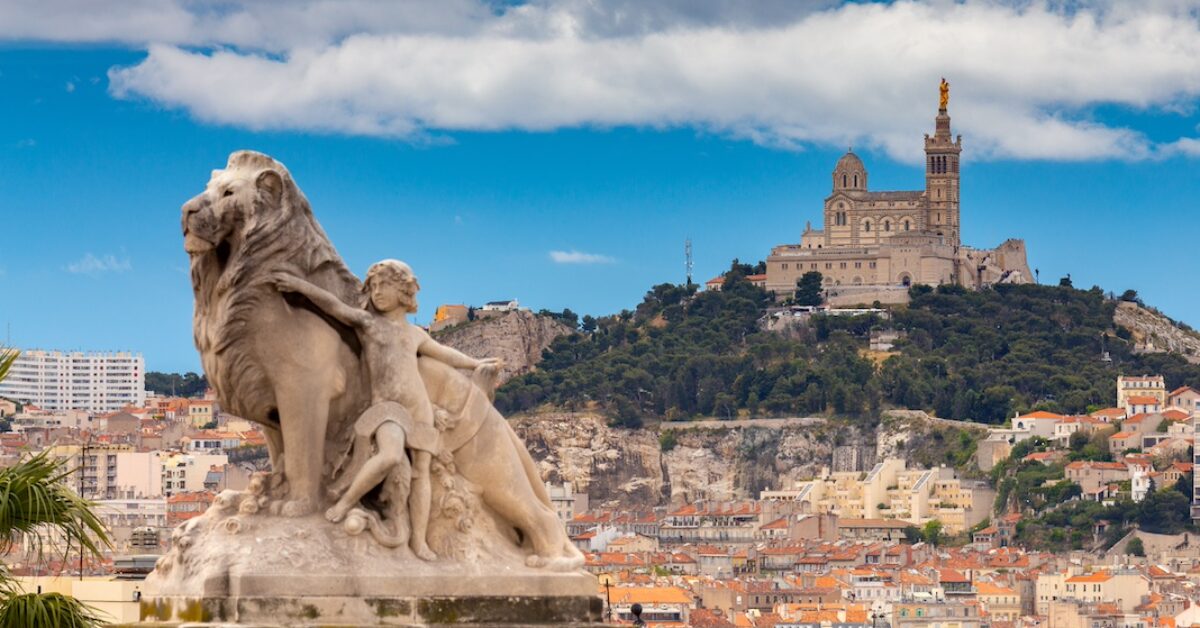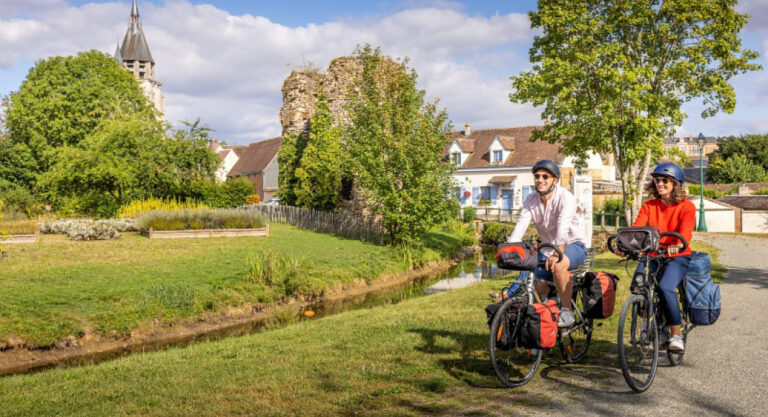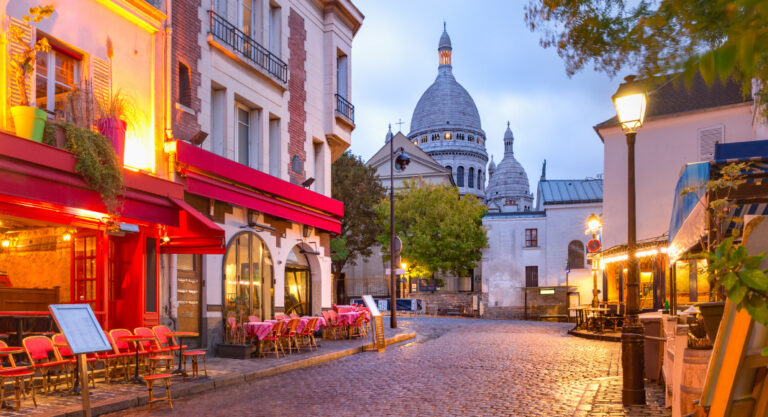When most think of sun-soaked southern France, they imagine the glamorous, star-studded beaches of Cannes, the lavender fields of Gordes, and the charming hilltop towns around Aix-en-Provence. But over the past few years, Marseille has asserted itself as a highly sought-after destination for French travelers and international tourists alike. This vibrant international city full of colorful street art, eclectic music, and dozens of languages is a lively alternative to some of the more sedate and pristine cities along the Mediterranean.
In addition to being France’s second largest city by population after Paris, it’s also the oldest; the ancient Greeks established a trading colony in this strategically located metropolis as early as 600 BC. Today, it’s a flourishing cultural melting pot of immigrant communities from North Africa (namely France’s former colonies Tunisia and Morocco), Spain, Italy, Armenia, and the Comoros Islands.
If the 300+ days of sunshine per year won’t convince you to give this port city a whirl, its bustling cultural institutions and proximity to natural marvels will. At just around 3.5 hours by high-speed TGV from Paris to the Marseille Saint-Charles train station (or an hour and 20 by plane to the Marseille Provence Airport), this Mediterranean city is the perfect seaside haven to spend a long weekend — although given its proximity to other cities, small towns, and beaches of le sud, we wouldn’t blame you for wanting to stick around a bit longer to tack on some day trips.
To help fill your time, here are a few of the best things to do in Marseille, France, the capital of the Provence-Alpes-Côte d’Azur.
20 Best Things to Do in Marseille, France
1. Discover Le Vieux Port

One of the first things to do in Marseille is visit Le Vieux Port — or Old Port — the heart of the city and arguably one of the most iconic Marseille attractions. It’s here where you’ll find ticket offices for seaside excursions (more on that below), street performers, a fish market with locals peddling their catch of the day, and endless rows of fishing boats lapping against the docks. It’s flanked on both sides by seaside restaurants with sprawling outdoor seating, but we recommend escaping the frenetic energy of the Old Port to eat elsewhere.
If you’re lucky enough to time your visit with a soccer match featuring Olympique de Marseille, the Vieux Port is where fans flock to celebrate afterwards.
2. Visit Noailles for its Market

Perhaps no other neighborhood epitomizes the dynamic mélange of African and French culture quite like Noailles. Located just five minutes by foot from the entrance to the Vieux Port, Noailles is best known for its daily market, Marché des Capucins, where you’ll find traditional North African ceramics and fabrics, plus heaping mounds of glistening dried fruit, fragrant spices, Tunisian pastries, and teas. Hungry for something heartier? Keep an eye out for the kebab and couscous stands.
3. Explore the Old Town of Le Panier

If you walk down the northern end of the Old Port and veer right, you’ll see a steep staircase bringing you up to Le Panier, Marseille’s oldest district. Charming is an understatement when it comes to this hilltop neighborhood, and it’s easy to spend the afternoon wandering the narrow cobblestone streets, admiring the colorful street art and bougainvillea, popping into art galleries and concept stores, and re-fueling along the way at one of the many café terraces. Plenty of Marseille tours go through this neighborhood, so a walking tour is one of the best ways to learn the history of the area.
If you’re in Le Panier around lunchtime, make a beeline for Chez Étienne, a no-frills, old-school Italian spot dishing out what many argue is some of the best pizza in Marseille. Get the moitié-moitié with half-cheese, half-anchovies. (Cash only.)
4. Pop into Cathédrale de la Major

The Cathedrale de la Major — often shortened to “La Major” by local Marseillais — sits between Le Panier and the Joliette neighborhood. When you visit Marseille, this architectural marvel is impossible to miss, which was precisely the point; the Cathedrale de la Major was designed by architect Léon Vaudoyer as a symbol of Marseille’s power, and it’s perched high to ensure ships arriving to the port would see it. Today, it’s celebrated for its diverse architectural style, mirroring the diversity and multicultural character of the city itself. It blends Roman and Byzantine styles with a mix of materials that includes onyx from Tunisia, mosaics from Venice, and white marble from Carrara (a city in Tuscany).
5. Snap a Photo from Fort Saint-Jean

If you walk all the way down the Old Port, you’ll find Fort Saint-Jean, a historical military fortress built between 1668 and 1671 under the orders of Louis XIV to defend Marseille. It’s located opposite its neighboring Fort Saint-Nicolas and has become one of Marseille’s most visited tourist attractions. As you walk along the path, keep an eye out for cannons and vaulted passages. And be sure to leave time for photos — it boasts some of the best panoramic views of the turquoise blue water.
6. Walk along Corniche Kennedy

Open since 1863, the Corniche — renamed the Corniche Président John F. Kennedy after the American president’s assassination in 1963 — is a coastal path spanning just under two miles connecting the Catalan and Prado beaches. Along this lovely walk, you’ll pass luxury hotels, 19th-century mansions epitomizing the glitz and glamor of the French Riviera, and ample restaurants and bars. And if you need a moment to rest your legs, sit on the bench that extends almost the entire length of the Corniche, making it one of the longest benches in the world.
7. Spend a Few Hours at the Musée des Civilisations de l’Europe et de la Méditerranée (Mucem)

The Mucem — translated in English to Museum of Civilizations of Europe and the Mediterranean — opened its doors in June 2013, the year Marseille was designated as the European Capital of Culture. A year later, it became one of the 50 most visited museums in the world, and a year after that was awarded the coveted Council of Europe Museum Prize.
As the first museum and cultural center dedicated entirely to European and Mediterranean civilizations, its exhibits incorporate threads of anthropology, archaeology, history, and contemporary art to explore the multiple dimensions of Mediterranean culture and the region’s relationship to the broader European continent.
The museum is composed of three sites: the J4 (a cube structure with a concrete, lacy facade and high footbridge that connects to the Fort Saint-Jean), the CCR (Centre de Conservation et de Ressources), and the Fort itself.
8. Travel Back in Time at the Musée D’Histoire de Marseille (MHM)

If you’re a history buff, the MHM is for you. Here, you’ll travel back in time to discover 26 centuries of history through the lens of archeology, fine arts, and architecture – there’s even augmented reality technology so you can fully immerse yourself in the city’s monuments as they existed in the Middle Ages. Fun fact: this museum is actually situated on the site where, between 1967 and 1983, archaeologists uncovered remains of the ancient Greek city, which are now preserved for guests to view in an impressive collection.
9. Admire the Architecture at Abbaye Saint-Victor

Located a stone’s throw away from the Old Port, the Abbaye Saint-Victor is a former abbey dating back to the fifth century. Free to enter, this fortified structure is now celebrated as a paragon of early Christian Romanesque and Gothic art. The name comes from its eponymous martyr, Saint Victor, whose relics are believed to be buried in a crypt deep inside the abbey’s tomb.
On Candlemas Day (February 2) — a Christian festival celebrating protection, prosperity, and the return of light — there’s a major religious procession that begins at the Old Port and makes its way along Rue Sainte to the abbey. Once there, the archbishop blesses La Vierge Noire (the Black Virgin) and the city before celebrating mass. Festivities end at Four des Navettes, a bakery with a historic 18th-century oven. It’s here where the archbishop blesses the dry, orange-scented biscuits shaped as small boats, or navettes.
10. Take a Day Trip to Parc National des Calanques

When visiting Marseille, don’t miss the Calanques National Park. Sitting between Marseille and neighboring Cassis, this breathtaking natural wonder is a one-of-its-kind geological formation composed of limestone cliffs that descend to narrow coves and, depending on where you are, either pebble or sandy beaches. This is one of the best things to do in Marseille for nature lovers, and you can either take public transportation to an entry point and hike down (but keep in mind…it’s a STEEP uphill climb on the way back) or explore by boat with a guided excursion that’ll have you back around early evening.
Of the 26 Calanques (25 in Marseille, 1 in Cassis), the most frequently visited are the Calanque de Sugiton, Calanque d’En Eau, Calanque de Sormiou, and Calanque de Morgiou. Marseille Tourism has a great guide with information on how to choose which Calanque is right for you and how to access it. There’s also a free app you can download with logistical information and maps of Calanques National Park.
11. Make Your Way Up to Notre-Dame de la Garde Basilica

The Notre-Dame de la Garde Basilica (Basilique Notre-Dame de la Garde) is a Catholic basilica, and one of the top Marseille attractions. It’s affectionately referred to by locals as la bonne mère (the good mother) because it’s perched on the city’s highest hill and is said to watch over the people of Marseille, France. The 45-minute climb is worth it — if not for the architectural beauty then surely for the 360-degree panoramic views of the city against the backdrop of the Mediterranean Sea. Not up for the hike? Not to worry, there are a few public transportation options to the Notre-Dame de la Garde: Le Petit Train or Bus 60 departing from the Mucem, Quai du Port, Quai des Belges, or Cours Jean Ballard.
Once you’re at the Notre-Dame de la Garde, be sure to visit the lower church with its arched vault as well as the upper church and sanctuary consecrated to the Virgin Mary.
12. Get Some Sun at Plages du Prado

Craving some beach time during your visit to this seaside city? Check out Prado, a succession of small, man-made beaches south of the city center. While we wouldn’t blame you for wanting to sit back and soak in the soleil, there are also ample options for those craving active time — beach volleyball and windsurfing are particularly popular. There’s also running trails in Parc Borély (classified by France’s Ministry of Culture as one of the most remarkable gardens of France) and a skate park near Bonnevine Beach. Heads up that, for the most part, this isn’t a sandy beach – what you’ll find are small rocks and pebbles.
While it’s easy to hop in an Uber for the 15-minute drive from downtown Marseille to the beach, public transportation is also an option; it’s accessible via Bus 83 departing from the Vieux Port or Bus 19 from Rond Point du Prado.
13. Marvel at the Gardens Surrounding Palais du Pharo

When Louis-Napoléon — who would eventually become Napoléon III — visited Marseille in 1852, he supposedly liked it so much that he decided to commission a palace for his wife, Eugénie. The only problem? By the time construction was complete, France had just suffered an embarrassing defeat in the Franco-Prussian War and Napoléon III was no longer in power. Eugénie ended up giving the palace back to the city of Marseille, and today it’s used as a conference and event center.
While you can only gain access to this impressive building if you’re attending a ticketed event, the gardens are open year-round and available to the public. To get there, take Bus 81 — or you can walk! The palace is located right across from Fort Saint-Jean at the end of the Old Port.
14. Visit the Majestic Palais Longchamp

The Palais Longchamp is located…you guessed it…in Marseille’s Parc Longchamp. But unlike the Palais du Pharo, this palais isn’t actually a palace…it’s the home of two museums: the Musée des Beaux-Arts and Muséum d’Histoire Naturelle, which you can read more about below. But it nonetheless deserves a standalone mention on our list of Marseille must-sees for its symbolism.
The building was constructed as a celebration of ingenuity; facing drought from the hot Mediterranean climate, engineers embarked on a 15-year-long project to construct aqueducts and an underground canal funneling water from the Durance River in the Alps region into Marseille. To depict this life-giving bounty, architect Henri-Jacques Espérandieu designed three large bulls pulling a chariot. Inside said chariot are three women: one represents the river and the other two represent grapes and wheat. As an homage to its history, all water used in the fountains of the Château d’Eau is recycled.
To get to Palais Longchamp, you can take Métro line 1 to Cinq Avenues Longchamp station or Bus 81.
15. Tap into your Artsy Side at the Musée des Beaux-Arts

Marseille’s Fine Arts Museum (Musée des Beaux-Arts) features works dating from the 16th to 19th centuries. Opened in 1801, it’s the oldest museum in the city, with a massive permanent collection of paintings, drawings, and sculptures by French, Dutch, Italian, and Flemish artists.
16. Immerse Yourself in Flora & Fauna at the Muséum d’Histoire Naturelle

Source: Muséum d’histoire naturelle de Marseille
You’ll be spoiled for choice at Marseille’s Natural History Museum (Musée d’Histoire Naturelle) — there are exhibits and collections dedicated to paleontology, botanical specimens, mineralogy, zoology, and the humanities. It’s easy to spend the afternoon lost in the world of flora and fauna, but be sure to leave time for the new permanent exhibit which was unveiled in spring 2020 to celebrate the museum’s 200th anniversary (complete with a huge wooly mammoth skull…).
17. Spend an Afternoon at Vallon des Auffes

For a taste of local culture, flâner away the afternoon in Vallon des Auffes, a quaint village tucked away in Marseille’s 7th arrondissement (accessible via Bus 83). This picturesque haven southwest of the Old Port is known for its rows of small, colorful fishermen’s houses and boats. While there’s no designated beach or supervised swimming area, don’t be surprised if you see locals jumping in the water under the arches — this is what’s known as the “Vallon swimming pool.”
Hungry? Head over to Chez Jeannot for a slice of pizza — if you snag an outdoor table, you’ll have unobstructed views of the neighborhood’s signature bridge. Or, for something on the fancier side, check out Chez Fonfon and don’t sleep on the bouillabaisse…it’s some of the best in the city.
18. Take a ferry to Château d’If

If you’re starting to run out of things to do in Marseille, remember that you can always get on a boat for a two-for-one adventure at the Île d’If and its famous château. This fortress-turned-prison was featured in Alexandre Dumas’ The Count of Monte Cristo, but its literary claim to fame isn’t the only allure; it also boasts a fascinating history.
Built in 1524 on an isolated island in the Frioul archipelago, this fortress was once used to jail opponents of royal authority. (Given its geographical location and history, it is often likened to San Francisco’s Alcatraz.) The last prisoners to be held here were Germans during World War I, and today hordes of visitors take the 20-minute ferry from the Old Port to tour the grounds — although keep in mind that, due to the currents, it takes around 45 minutes to get back. It may have château in the name, but it’s relatively small, so you likely only need to budget around two hours for the journey.
19. Marvel at Marseille’s Hôtel de Ville (Town Hall)

Marseille’s City Hall is an impressive building that dates back to the 17th century. Designed in the Genoese Baroque style, the building was spared from destruction first during the French Revolution and then in 1943 during the bombings of World War II. Because of its Italian architectural influence, it earned the nickname la loggia (la loge, or “the lodge”). Today, the Hôtel de Ville houses the mayor’s office, as well as the city council and other administrative offices.
It’s composed of two buildings: the Puget Pavilion (port side) and the Bargemon Pavillon (square side). Fun fact: there’s no staircase connecting the ground floor and the first floor. Instead, the two are connected via a closed bridge located behind the building. This was an intentional decision since, at the time, it was customary to separate the merchants (on the ground floor) from the elected members of council (on the first floor).
20. Take a Day Trip to Neighboring Aix-en-Provence

While you can easily spend a week in Marseille and not get bored, many opt to make the city their home base and explore from there. In just around 30 minutes by car or 15 minutes by TGV, you can be wandering the quaint streets of Aix-en-Provence, which, despite its proximity to Marseille, offers an entirely different experience. Spend the day wandering the winding cobblestone streets lined with small boutiques, grabbing un verre at one of the many restaurants and cafés in Cours Mirabeau, browsing one of the city’s many farmers’ and flea markets, visiting The Granet Museum, or walking in the footsteps of impressionist artist Paul Cézanne.
Looking for other day trips from Marseille? In just around one hour by car, you can be in the vineyards of Saint-Rémy-de-Provence or walking in the steps of Van Gogh in Arles.
—
Bref, the list of best things to do in Marseille, France is a long one. And while the city may be renowned for its beaches and hot Mediterranean climate, that doesn’t mean it’s a single-season destination. Au contraire…given its temperate climate, a winter getaway in Marseille and Aix-en-Provence is always a good idea.
Jacqueline Parisi is a Brooklyn-based content strategist, writer, and copywriter with an appetite for all things French. She holds a BA in English & French from Boston College and an MA in French Studies from NYU. Her graduate research focused on refugees in Paris via the intersection of food, identity, and memory. When not working, she can usually be found on the yoga mat, watching French Netflix, or reading for the one-too-many book clubs she’s a part of. Find her previously published work here.






